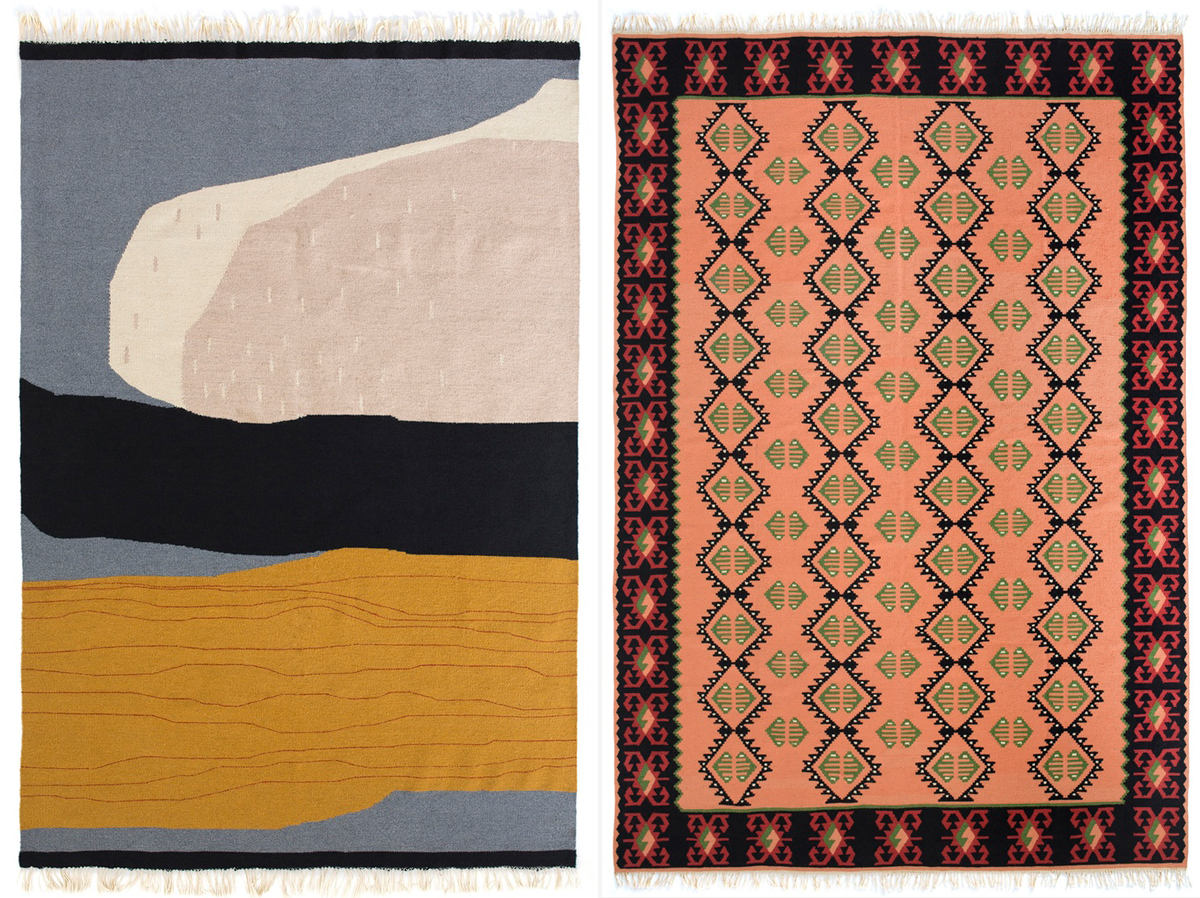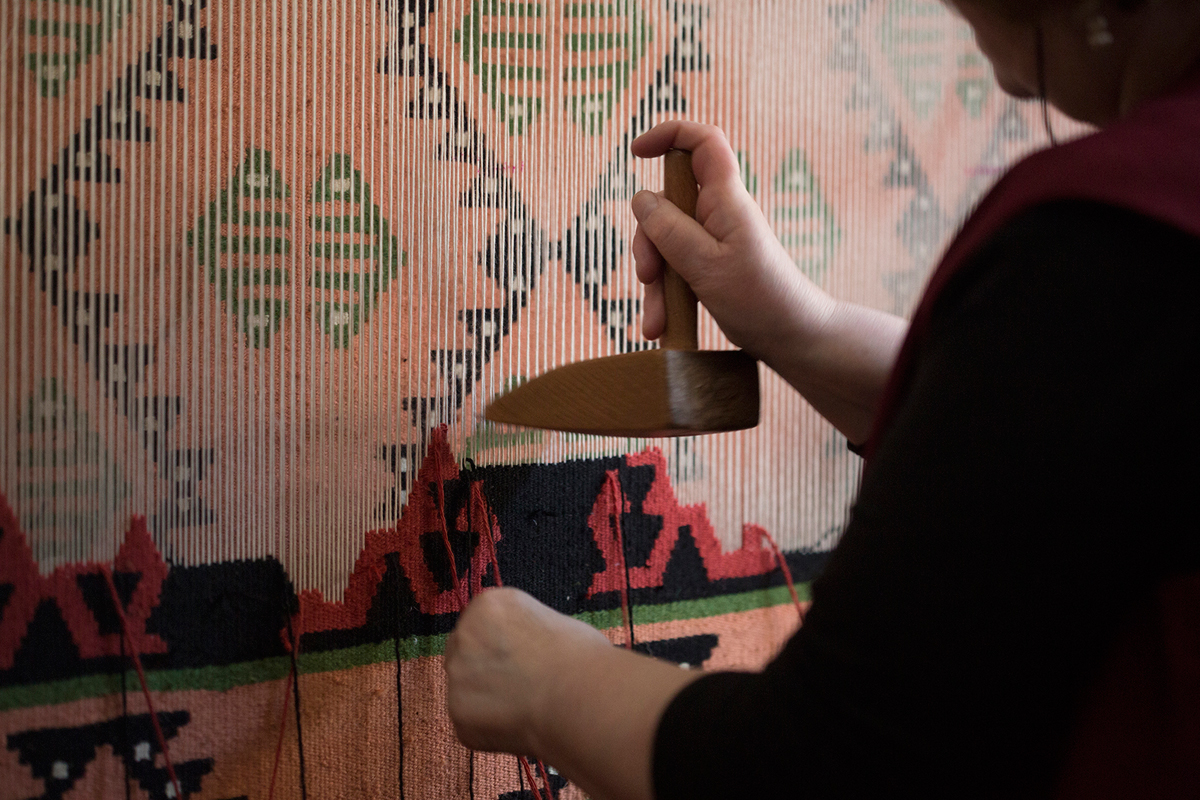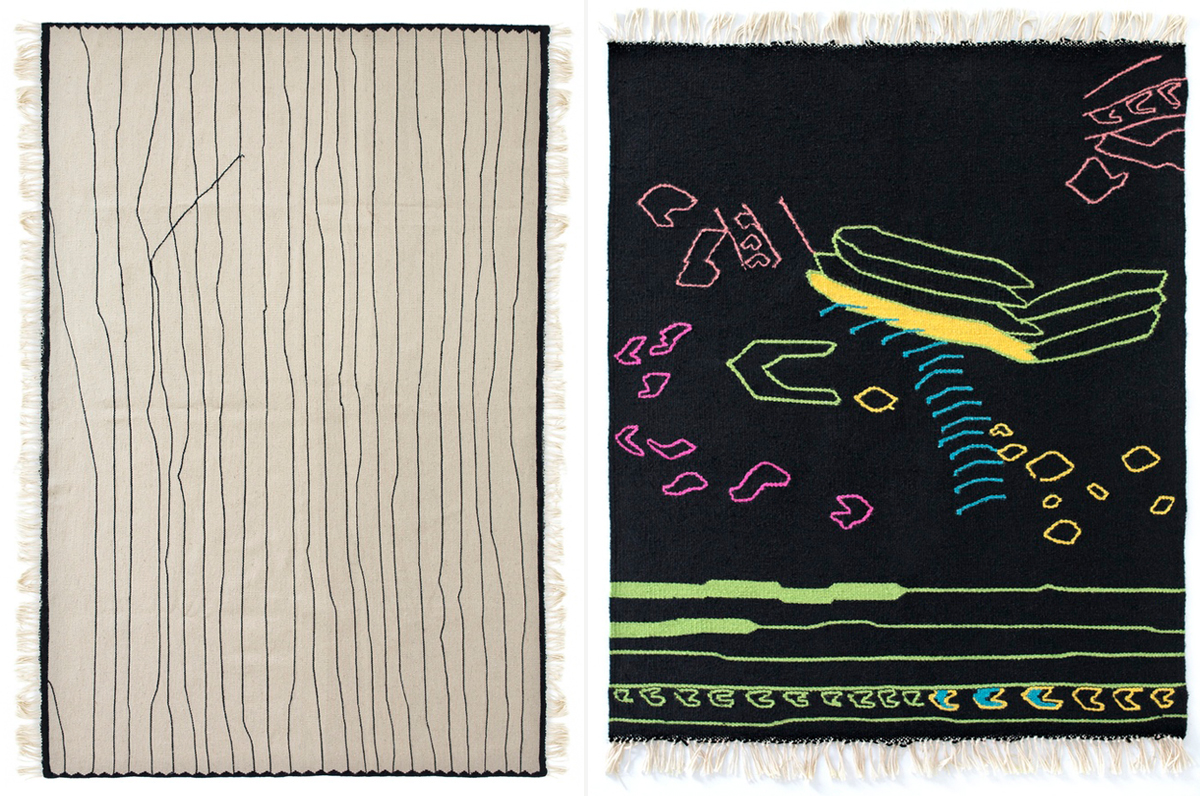Handmade Kobeiagi Kilims
Preserving a traditional craft, while bringing its design to the present day


Kilims are traditional hand-woven wool rugs from the Balkans and were once a ubiquitous feature in the homes of former Yugoslavia. But like so many other traditional items, kilims have somewhat fallen out of favor with younger generations. Designer and illustrator Nina Mršnik and architect Ivana Blaž (who met while they were at university in Italy) have made it their mission to bring back the beautiful and practical rugs, with updated, fresh designs—but the same attention to detail and traditional craftsmanship. “In old Bosnian houses, they are everywhere. One single room can have a kilim on the floor, another one to cover a sofa; it’s placed on the wall behind benches, so it’s warm when you lean on it; and then it is also used as a kind of a curtain,” Blaž, who grew up in Travnik, in Bosnia and Herzegovina, tells CH.

Blaž and Mršnik (who is originally from Slovenia) are now both based in Ljublana, Slovenia, and their Kobeiagi rugs are handwoven by weavers in Visoko, Bosnia, using wool from local long-fleeced sheep. The process is the same as for classic kilim rugs, but the designs have been updated to fit into contemporary homes. Though the designs are modern, the manufacturing process takes into account the fact that everything is still made the old-fashioned way: “We send the designs to Lejla, our weaver captain, and she tells us which parts would be difficult to do for the weavers. So we adapt the design, go through the color scheme with her, then our color guy dyes the wool specially for us, and the weavers start hand-weaving. It takes them one week to finish our smallest kilim and six weeks to do our biggest one,” say Blaž and Mršnik.

Their playful designs, which are available through Kickstarter now, are inspired by the people surrounding the designers, and range from the more traditional “Lejla,” named after their weaver captain, to the “Baja,” which is named after Mršnik’s mother and resembles an abstract art piece. The wool means that the rugs work as a natural insulation when placed on the floor or on a wall, and they can be used as both blankets and rugs—or just as decoration.
Blaž and Mršnik hope to make kilims popular again to prevent the craft from dying out. “There are really few women left that practice the kilim weaving technique in Bosnia,” they explain. “Our aim with this project is to preserve the craft of weaving kilims by creating work for our weavers, and teaching the younger generations this skill and showing them there is a future in this craft.” As sustainable and locally made products continue to gain traction globally, projects like Kobeiagi kilims have the potential to become threads that binds the past and present together.
Images courtesy of Kobeiagi












